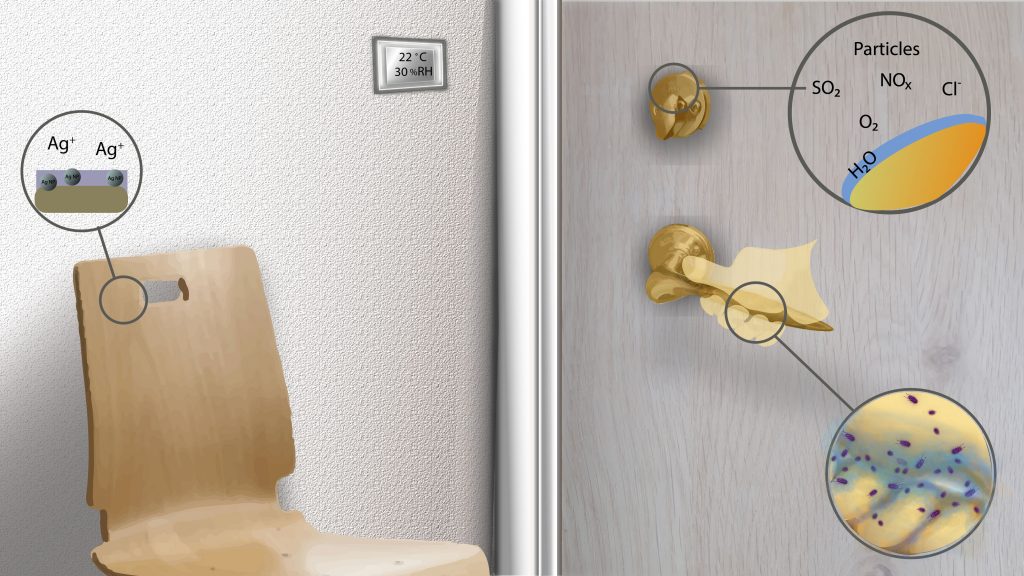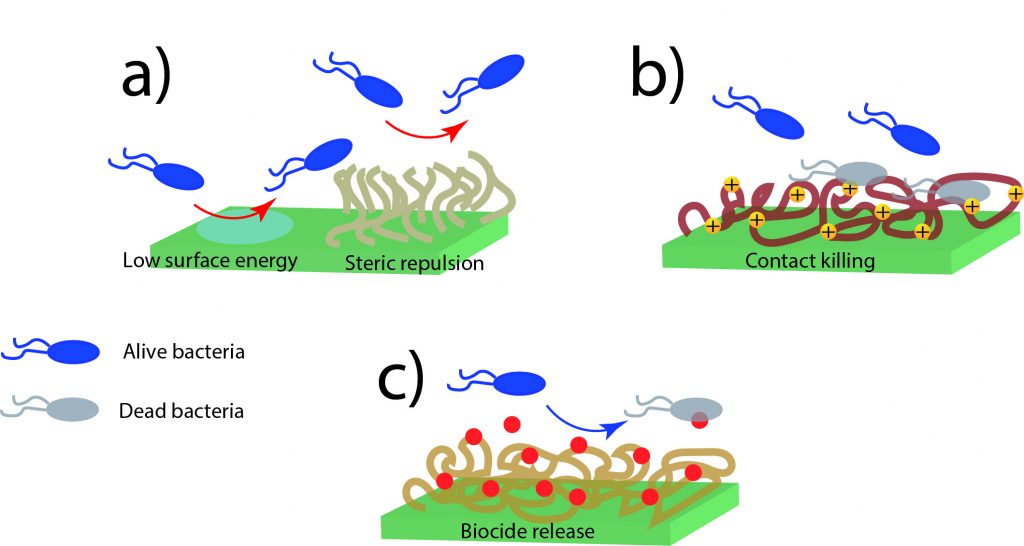




Antimicrobial surfaces have been demonstrated as a valid strategy to help break the infection chain, especially when applied as high-touch surfaces in indoor hygiene (IH) settings where there is a high risk of bacteria transfer. Metals (i.e. copper metal, copper-based alloys and silver-containing coatings) have shown, due to their intrinsically antimicrobial efficiency, to be ideal candidates for these purposes, schematically illustrated in Figure 1. Moreover, high-touch surfaces used for indoor applications such as doorknobs, door handles and furniture need to remain their antimicrobial properties even when tarnished, degraded or cleaned.

A viable strategy to cut down bacterial cross-infection and to reduce healthcare-associated infections (HAIs) might be the development of non-fouling or antimicrobial surfaces. These surfaces aim predominantly at the prevention of microbial adhesion and biofilm formation. Such materials either repel microbes (antifouling) or kill bacteria (antimicrobial) present in the surface proximity.
The non-fouling or antibacterial surfaces can be grouped into three categories as shown in Figure 2: a) surfaces that resist bacteria attachment (e.g. low energy surfaces or sterically repelling surface), b) contact–killing surfaces (e.g.copper, copper-based alloy or polymers containing quaternary ammonium groups) and c) surfaces treated with leaching antibacterial agents (e.g. sliver containing coating).

The mechanism of action of the first one is based on the prevention of biofilm formation, while killing approaches correspond to antimicrobial surfaces that lead to the disruption of bacterial cells on contact, leading to cell death.
Villapún, VM. et al. Antibacterial Metallic Touch Surfaces. Materials, 2016, 9: 736.
https://doi.org/10.3390/ma9090736
Andrade-Del Olmo, J. et al. Antibacterial Coatings for Improving the Performance of Biomaterials. Coatings, 2020, 10: 139. doi:10.3390/coatings10020139, https://www.mdpi.com/2079-6412/10/2/139